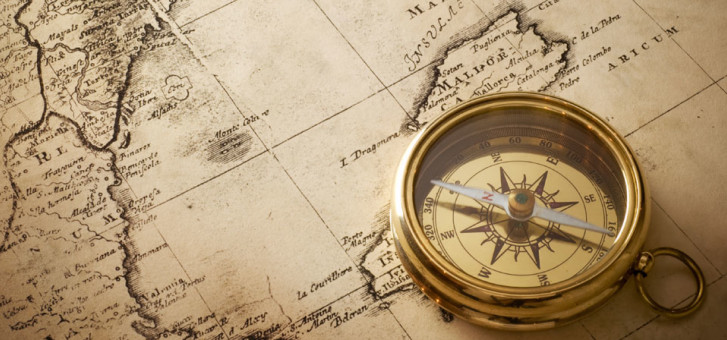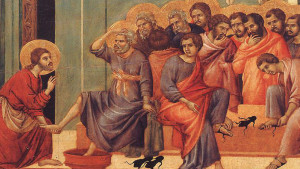Visitors to the land of Turkey report it is a “must-see” area—the fabulous, almost fairytale area of Cappadocia To the locals it is pronounced Kapadokia.
It is situated in central Turkey.
Here the silk caravans from the east passed through on their way to the west. When the apostles went on their missionary journeys—and in particular, the great apostle Paul—the vast area of what is known now as Turkey was visited on a number of occasions and the Christian witness became strong in those parts.
Consider the introduction to Peter's letter to the churches as an example: “Peter, an apostle of Jesus Christ, to God's elect, strangers in the world, scattered throughout Pontus, Galatia, Cappadocia, Asia and Bithynia” (1 Peter 1:1).
Bithynia and Pontus are areas in the north of Turkey along the Black Sea. Asia is the western part of the country— hence the name often used for that part of Turkey has been Asia Minor.
Galatia was in the centre of the country and Lycia and Pamphylia to the south. Cappadocia is in the central eastern part of the country.
According to Peter's letter, Christians were scattered all over what is today Turkey, and Cappadocia had Christian congregations as well.
Today, for the British, Australians and New Zealanders, the Gallipoli battlefield of World War I is perhaps the foremost attraction. While it is said Australia forged itself into a nation on this battleground, Turks also visit the sites of Gallipoli by the tens of thousands. To them it was the defence of their own country and while their losses were staggering compared to those of Australia, New Zealand, Britain and France, Gallipoli is now revered by the Turkish nation.
After Gallipoli, the ancient site of Ephesus is perhaps one of the most visited sites in the country.
At Ephesus some reconstruction has been carried out and begs the tourist's attention. However, the most astounding natural formations are found in the east of the country in Cappadocia. Here soft rock called tuff or tufa has been eroded by the passing of time leaving chimneys. These extremely unusual and sometimes mushroom-shaped tops must be seen to be believed. A thin volcanic top is in place but the soft tuff has been eroded. Sometimes it appears as a tall spire-shaped hill has a slab of harder rock like a hat on the top. Early Christians hollowed out rooms, houses and churches in this soft rock.
The Göreme Valley near Nevsehiris about an hour's drive west of the airport of Kayseri. Here almost wherever you look, these strangely shaped hills have bee excavated for living and storage areas. Cameras work overtime here, and an early morning balloon ride makes it appear you are in a moonscape.
The area of Zelve near Göreme is a particularly interesting place. Here there are churches and monasteries. One picture has a cross with fishes on the arms-linking the use of the fish with that of Jesus,
Just as fascinating and interesting are the underground cities. While Derinkuyu and Kaymakli are perhaps the best known, Ozkonak and Saratli are among others in the area. Derinkuyu could give shelter to up to 10, 000 inhabitants over eight levels. The tunnels giving access are narrow and of course are in total darkness other than for torches.
Today electricity makes it available to visitors - even thought you may have to bend over in may places. Every so often hugh round stones about 1 to 1.5 meters in diameter and up to 50 centimetres thick, weight up to 300 kilograms were rolled into recesses effectively blocking access to invaders. This is the largest underground city in the world with anarea of almost 2.5 square kilometeres.
Being a place of refuge, these cities had shafts down to the water table to enable all to live there for extended times if neccessary. So clever was the construction of these underground cities that even the smke of their cooking firies seemed to dissapte without revealing their wereabouts. The constant temperature of 16-18°C made it a welcome place, particulatly when winter snows covered the ground above.
To enable fresh air to circulate, Derinkuyu had 52 vertical air tunnels. Here you can find stables, churches, living rooms, storage rooms, kitchens, a winery and even a missionary school. Each family would be allocated an area. Kitchens were often communal.
Christians found that these underground cities became places of refuge when persecution came their way. Maybe Peter's message to "the elect scattered abroad" was true in more ways than one!
In Göreme, the Legend Cave Hotel has many rooms, almost all of them dug out of the soft rock in a chimney. To many visitors, it adds that extra mysterious air about this must-visit part of Turkey nd is a highlight of a visit.
This part of Turkey had the witness of Christians down through the centuries from the time of the apostels until about a century ago. Agter the end of World War I, conflict broke out between Greece and Turkey. many Turks lived in what is today Greece, and many - maybe wo million Greeks - lives in western Turkey and across into Cappadocia.
Greece expectd to win the conflict easily, but it could not prevail. At the conclusion of the war in 1923, millions of Turks were moved from mainland Greece to Turkey and likewise the millions of Greeks were moved to Greece.
This was on e of the largest people movements in history and scores of thousands of people perished in this mass movement of peoples.
The Greek Orthodox churches carved into the moutains and chimneys of the Cappadocia region remain as mute testimony to a witness for Christianity that existed and thrived in this area.
Tourist flock to see the church caves and sights. Sadly, this beautiful lad with its must-see places almost entirely lacks a Christian witness today. Maybe this land with its strikingly differen topography should teach each of us a lesson, that it is possible to have a strong Christian belief and witness-and to lose it.
Maybe we should ask ourselves the great salvation given to us by grace though Jesus Christ, stronger and brighter now than ever before? Have we come to treat the greatest gift in the universe with indifference of familiarity with a "take it or leave it" attitude? Is it time to make sure the "faith once delivered to the saints" is a personal belief treasured above everything else?
We can take the Holy Scriptures - not just the letter from Peter - and make it part of our lives, to live by it each and every day. Such a life of faith will give us the hope of a glorios future with Jesus Christ.





